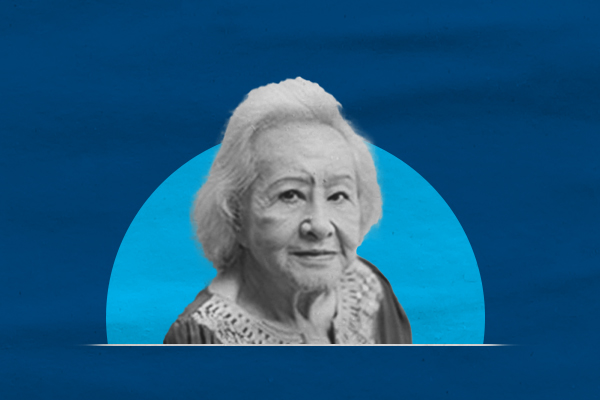First six months of 2020: Disasters, deaths and disease in PH
MANILA, Philippines — The first half of the decade’s final year saw disaster, death, and disease.
It was a period of seemingly organized sequential events that brought tears, despair, and chaos in the lives of many Filipinos. It was like a monthly episode of calamity: a volcanic explosion in January, an animal virus outbreak in February, and a pandemic in March.
Not to mention the passing of prominent personalities since the start of the year.
Force majeure
In observance of National Disaster Consciousness Month, it may prove insightful to look back on some misfortunes the country managed to survive even as it continues the battle midpoint of 2020.
Taal Volcano eruption: On January 12, Taal Volcano had a phreatic blast that resulted in ash fall over Batangas province and nearby areas. The volcano’s alert status quickly reached level four. Several weak eruptions followed, and over a month later, the entire Calabarzon region was put under a state of calamity with nearly half a million people in the region affected. On March 19, the alert status was eventually lowered to level one.
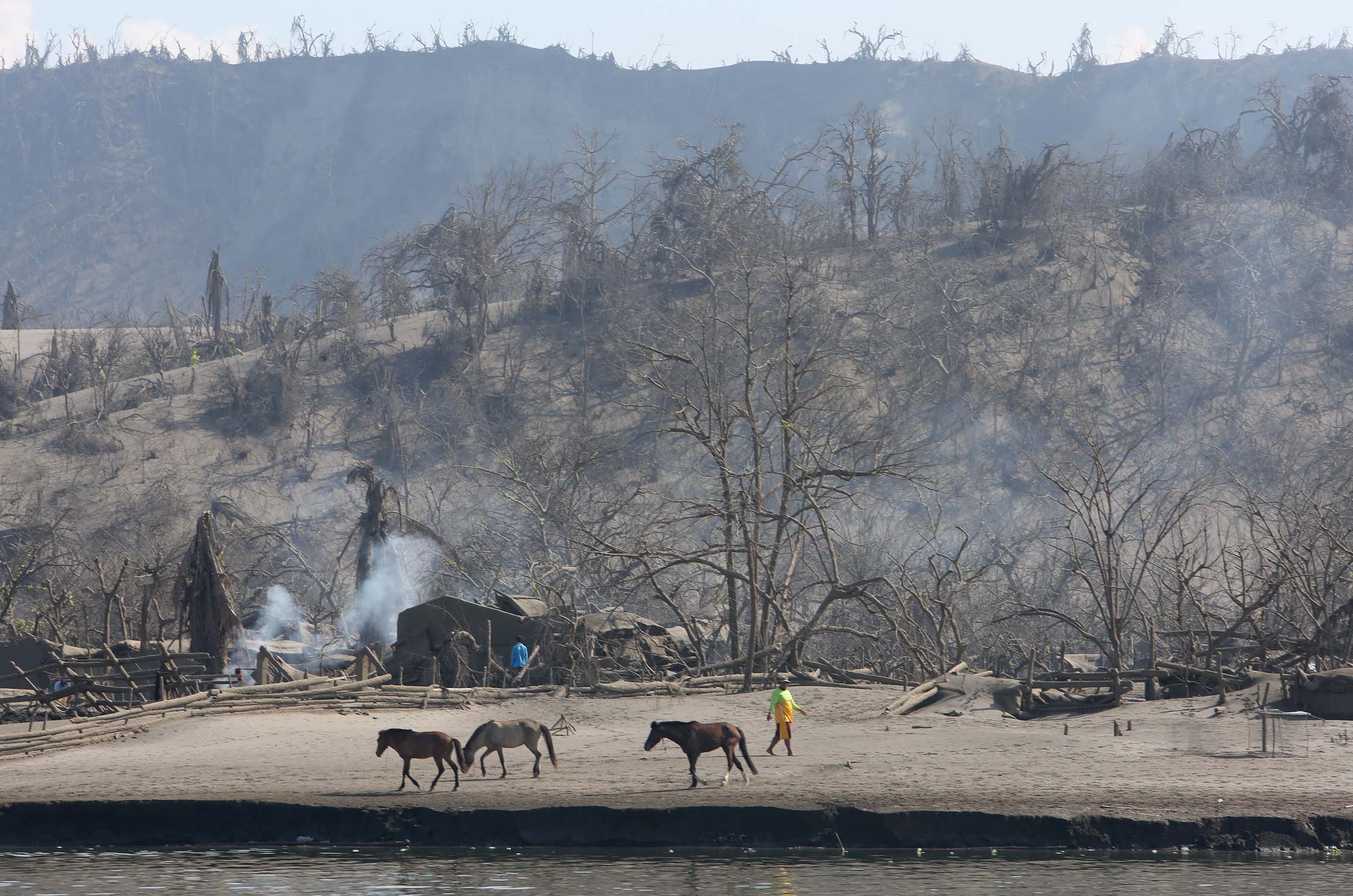
(FILE) LIVING DANGEROUSLY As Taal Volcano quiets down, some residents return to Pulo (Volcano Island) to check their houses buried in ash and their horses and farm animals that survived the volcano’s steam-driven eruption on Jan. 12. —MARIANNE BERMUDEZ
Prior to this year’s burst, Taal’s last eruption was in 1977. While not as powerful, this year’s explosion still caused a great disruption, not only to the affected population but also to different sectors, most especially agriculture and infrastructure where damage was reported to cost over P3.4 billion in Calabarzon. In addition, 14,082 houses were either damaged or destroyed, 264 cities suspended classes, and 643 flights were canceled. Power interruption was also reported in 24 cities in the region while three cities in Batangas province experienced water interruption.
Article continues after this advertisementAfrican Swine Fever: The outbreak of African swine fever in the country started in September 2019, but by June of this year, there are still reports of ASF-infected hogs in some provinces. Back in February, the government of Davao Occidental declared a state of calamity and around 100,000 hogs were culled, for which the local government eventually paid P50 million.
Article continues after this advertisement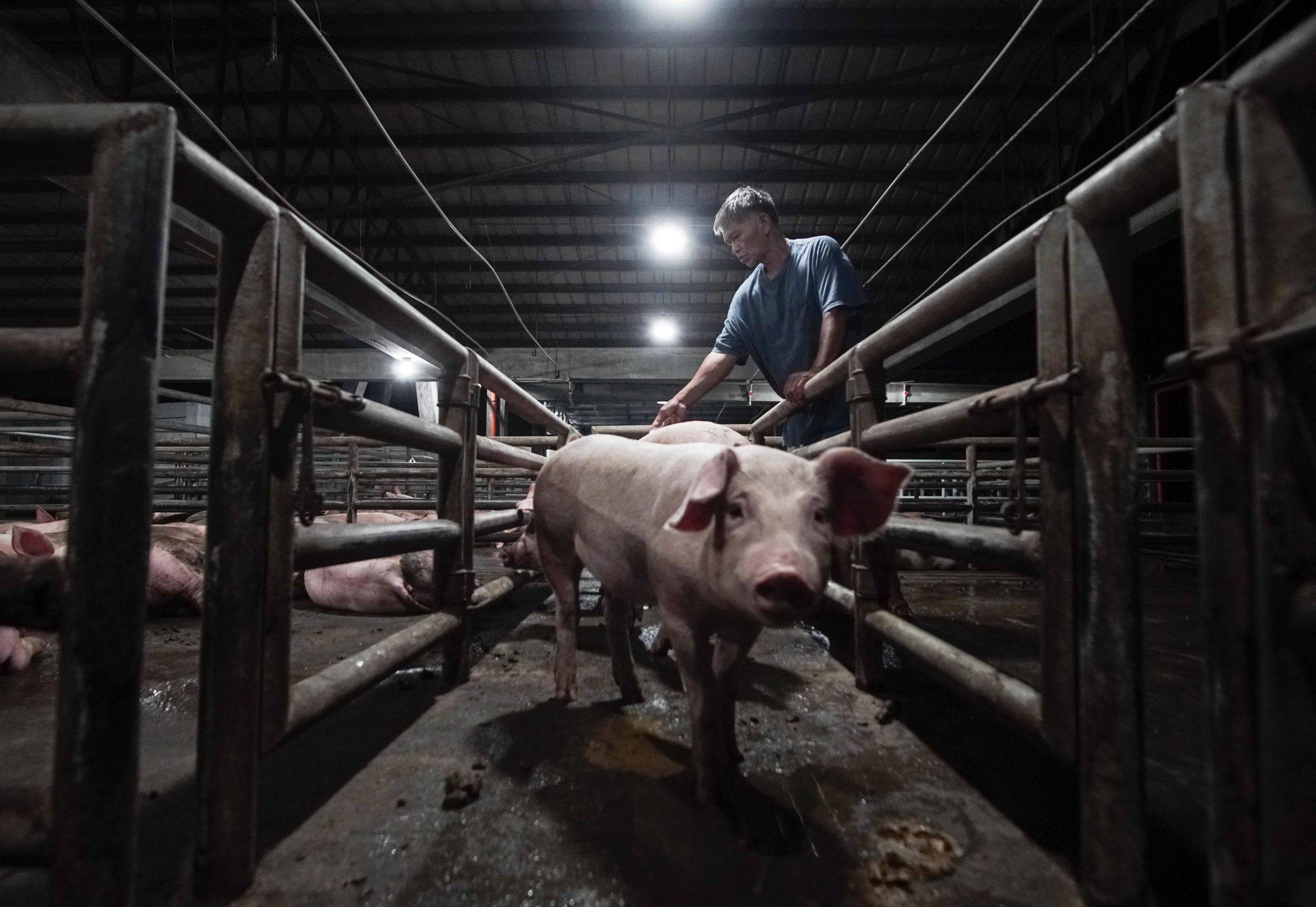
(FILE) ANIMAL HEALTH ALERT Hundreds of pigs are slaughtered daily in this government-run abattoir in Legazpi City, Albay province. Local and agriculture officials in Bicol have intensified the monitoring of pig farms and the hog trade in the region to stop the spread of the African swine fever. —MARK ALVIC ESPLANA
Typhoon Ambo: On May 14, the first typhoon to hit the country made landfall in Eastern Samar. Typhoon Ambo, which was described as “Yolanda Jr.,” left four people dead and 169 injured. Damage across the country were estimated at around P2 billion, and Northern Samar and nine Eastern Samar towns were placed under state of calamity. Some 57,269 houses and 336 structures (hospitals, schools, etc.) were also reported damaged.
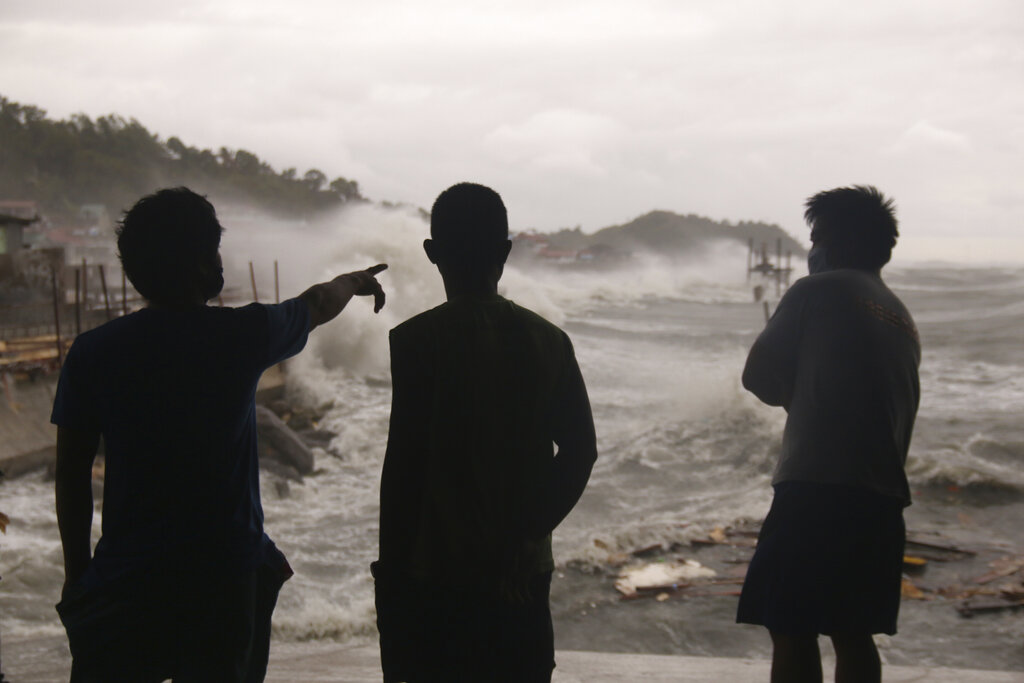
(FILE) Men watch as strong waves caused by typhoon Vongfong batter the coastline of Catbalogan city, Western Samar province, eastern Philippines, Thursday, May, 14, 2020. —AP
COVID-19 crisis: On January 30, the Philippines confirmed its first case of the new coronavirus – later named SARS-CoV-2, which causes serious respiratory ailment COVID-19. She was a woman-tourist who came from Wuhan City in Hubei province of China, where the latest strain of coronavirus was first detected in late 2019. The death of her male companion a few days after was labelled as the first COVID-19-related death outside of China. On March 6, the Philippine health department confirmed the first two Filipinos who tested positive for SARS-COV-2. It was also at this time when the country’s first case of a local transmission of the virus was reported. On March 11, the government reported the first Filipino to die from the disease, and five days later, on March 16, Luzon was placed under enhanced community quarantine, which completely shut business operations in the region and compelled residents to stay indoors. As of this posting, Metro Manila, including the nation’s capital city, remains on (a relatively relaxed) lockdown – the longest in the world. By June 21, COVID-19 cases in the country breached the 30,000-mark.
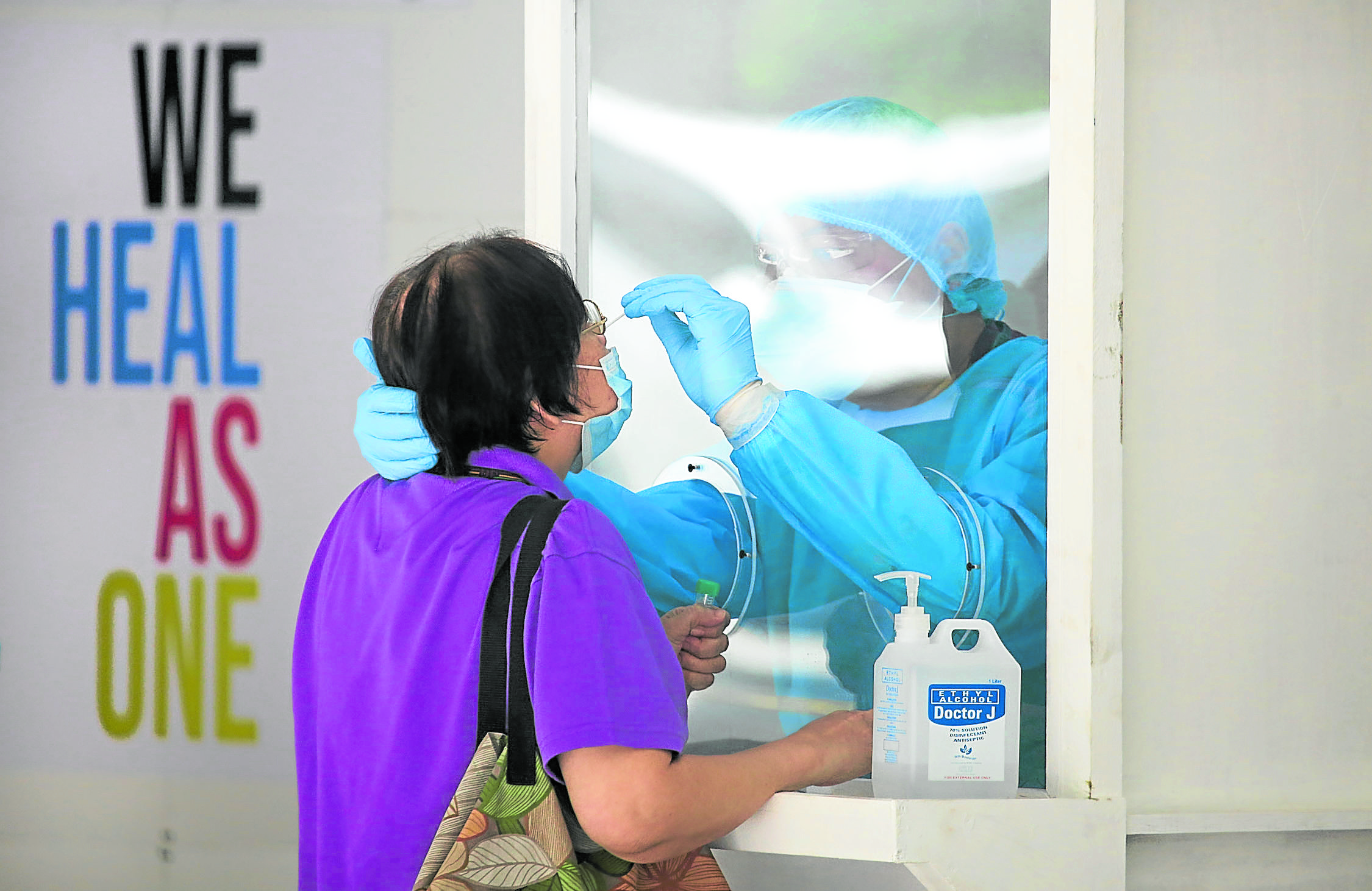
(FILE) Persons identified for contact tracing in connection to COVID-19 patients undergo swabbing procedures inside UP-Philippine General Hospital, Manila. —LYN RILLON
One huge challenge the Taal Volcano eruption and Typhoon Ambo created is the displacement of thousands of individuals amid a health crisis, effectively making it impossible to implement social distancing, much less any form of self-quarantine, in a bid to curb the spread of the potentially-deadly virus.
A report from the National Disaster Risk Reduction and Management Council dated March 6 shows that a total of 736,802 individuals were affected by the Taal eruption, of which 4,212 persons were taking temporary shelter in evacuation centers. Meanwhile, a report on Typhoon Ambo dated May 27 shows that 578,571 persons were affected by the typhoon. Previous reports also show that aside from the challenge of social distancing in crowded shelters and centers, there was also problems in providing aid for disaster victims as local governments struggled to find funds.
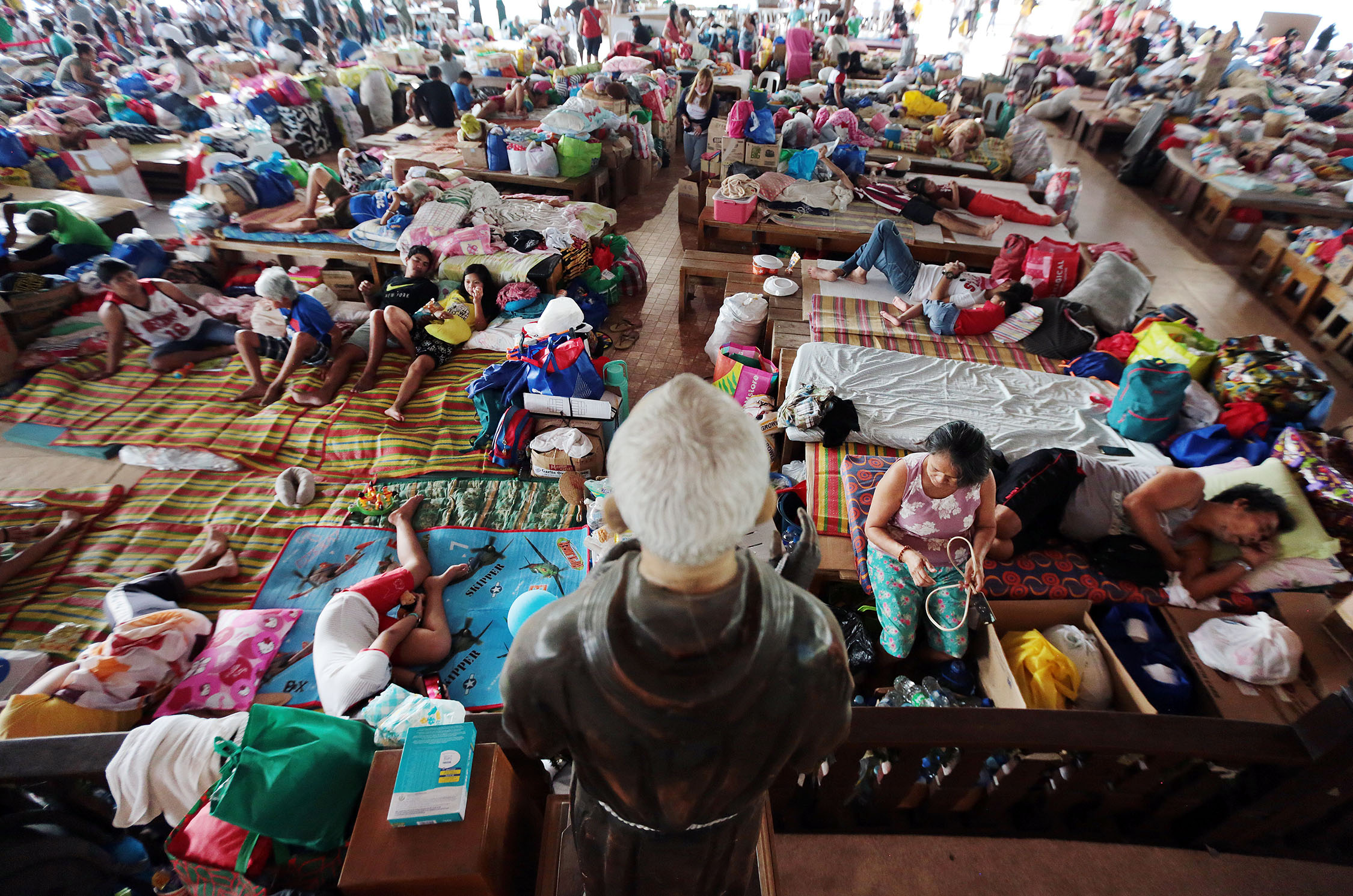
(FILE) HEALTH RISK In this photo taken on Jan. 20, residents fleeing the eruption of Taal Volcano in Batangas province seek temporary shelter at the National Shrine of Padre Pio in the City of Sto. Tomas. Today, families displaced from the Volcano Island remain in evacuation centers in Laurel, Talisay and Ibaan towns,making them vulnerable to the coronavirus. —GRIG C. MONTEGRANDE

(FILE) FLEEING ‘AMBO’ Residents of Padang village in Legazpi City, Albay, near the 7-kilometer danger zone in the path of lahar-laden floodwaters from Mayon Volcano, are evacuated to a school in the city as Typhoon “Ambo” bears down on Bicol region on Thursday. Evacuees face the challenge of keeping physical distancing to avoid coronavirus infection and trying to survive the storm in the emergency shelters. —MARK ALVIC ESPLANA
In memoriam
Like flashes that broke through the deluge of disaster-related news, the deaths of some prominent personalities shocked the nation. Many notable local artists, journalists, politicians, academics, athletes, performers, advocates, and health professionals passed away in the last six months due to COVID-19 or other illnesses.
These are some of the recently departed public figures who devoted their lives, one way or another, contributing to nation-building.
Ninez Cacho-Olivares: The country lost two veteran journalists during the first month of the year, among them is Ninez Cacho-Olivares. A former columnist for Philippine Daily Inquirer and BusinessWorld, she was also known for being a critic of dictator Ferdinand Marcos. Cacho-Olivares, who founded and served as Editor-in-Chief of The Daily Tribune, died on January 3 at the age of 78.
Twink Macaraig: Veteran journalist Twink Macaraig died on January 14 after her bout with cancer. She was a Filipino bureau chief of Channel News Asia, an anchor at ANC and News5, a columnist at The Philippine Star, and a part-time faculty member at the University of the Philippines College of Mass Communication. She was 55.
Menggie Cobarrubias: One actor who passed away this year due to COVID-19 is veteran thespian Menggie Cobarrubias. Initially, his death was said to have been due to pneumonia. Eventually, however, a test confirmed that he had COVID-19. He was 66. Cobarrubias, who was best known for his work on stage, won the Gawad Urian for Lino Brocka’s Jaguar. The night before he passed, he wrote a simple “good bye” on Facebook.
Heherson Alvarez: Former senator and environment conservation warrior Heherson Alvarez succumbed to COVID-19 on April 20 at the age of 80, a month after he was diagnosed with the disease. He was known as “a staunch freedom fighter during the Marcos dictatorship, environmentalist and a firm human rights advocate.” Before his death, he and his wife, Cecile Guidote-Alvarez, planned to have a formal wedding for their 50th anniversary in November.
Mon Jimenez: Former tourism secretary Mon Jimenez passed away on April 27 at the age of 64. It was during his time with the government that the “It’s More Fun in the Philippines” tourism campaign was created. Esteemed by his peers as “kind” and “brilliant,” Jimenez started his career in advertising where he also formed an agency now called Publicis JimenezBasic.
Peque Gallaga: Legendary filmmaker and mentor Peque Gallaga died on May 7 from cardiopulmonary arrest. He was 76. His most iconic film is the epic Oro, Plata, Mata, but he is also known for the erotic flicks Virgin Forest and Scorpio Nights. Two weeks before his death, Gallaga called his friend and collaborator Lore Reyes, with whom he directed Magic Temple and Magic Kingdom, to bid farewell.
Tessie Aquino-Oreta: Another former senator who departed early this year is Tessie Aquino-Oreta. Among the laws she helped pass are the Early Childhood Care and Development Act, Solo Parents Act, Solid Waste Management Act, and Clean Air Act. Aquino-Oreta is the younger sister of democracy icon and former senator Benigno “Ninoy” Aquino Jr. She died of cancer on May 15 at the age of 75.
Anita Linda: Hailed as the “Grand Dame of Philippine Cinema,” Anita Linda was at one point the oldest working actress in the country. She was said to be “the only actress to experience the three golden ages of Philippine cinema,” with her first film dating back to 1943. Her recent award-winning films include Adela, Lola, and Sta. Niña. Linda succumbed to heart failure on June 10. She was 95.
Perfecto Yasay Jr.: President Rodrigo Duterte’s first chief diplomat died on June 12 at the age of 73 due to cancer-related pneumonia. With Yasay as foreign affairs secretary, the Philippines built stronger ties with China, but his appointment was rejected due to citizenship issues. Yasay, who chaired the Securities and Exchange Commission from 1995 to 2000, was also instrumental in the impeachment of former President Joseph Estrada.
Danding Cojuangco: Known primarily for being the chairman of San Miguel Corporation and other enterprises, tycoon Danding Cojuangco also served as the key business adviser of former President Ferdinand Marcos, whom he helped set up the Coconut Industry Investment Fund. On the side, he was also a philanthropist and patron of Philippine basketball. Cojuango was a cousin of former President Corazon Aquino, wife of former senator Benigno “Ninoy” Aquino Jr. Cojuangco passed away on June 18 at the age of 85.
Ramon Revilla Sr.: Former action star-turned-senator Ramon Revilla Sr. died on June 26 due to heart failure. He was 93. Known as “Nardong Putik” and “Agimat” for his flicks, he authored laws such as the Public Works Act of 1995, Children’s Media Act, and amendments to the Dangerous Drugs Act and gun laws when he served as senator from 1992 to 2004.







